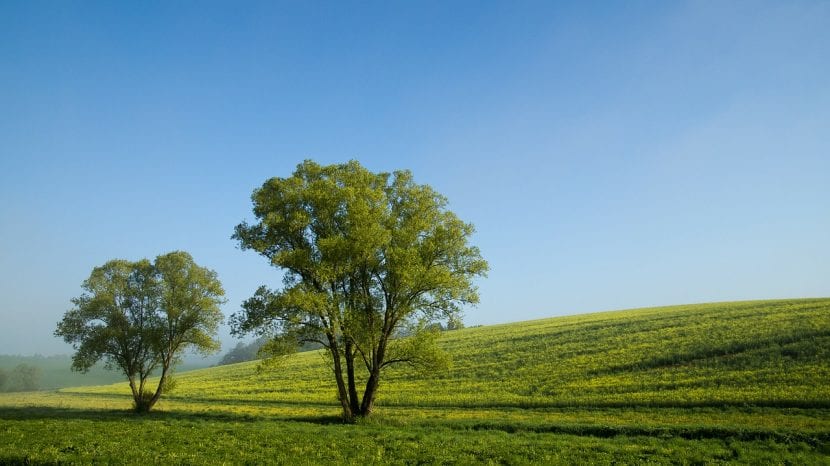
We live in a fascinating world, full of animal life and, above all, plant life. Plants have been on Earth for many millions of years, to be more or less exact, it is estimated that they began their evolution about 1.600 million years ago. Since then, and as the Earth was having its current configuration, have been developed to be able to adapt to the various conditions that they were presented.
Thus, each of the parts of the plants has been perfected more and more. But, What are these parts? What function do they have?
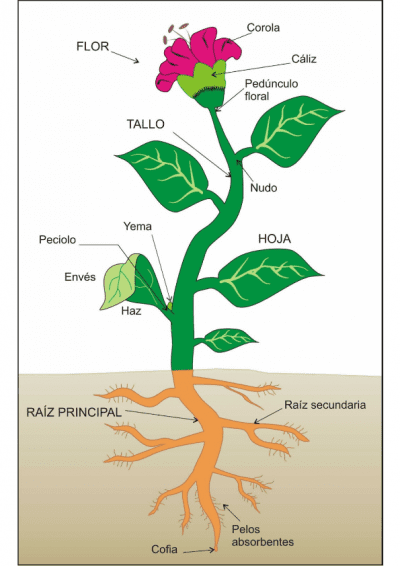
Image - Cuentosydemasparapeques.com
Plants, unlike animals, once the seed germinates in a place there it will remain throughout its life. Despite this, they do something that none of us can do: transform the sun's energy into food. In doing so, they absorb carbon dioxide (CO2) and release oxygen (O2) in a process called photosynthesis. That is why the first part that we are going to look at is the root.
Roots
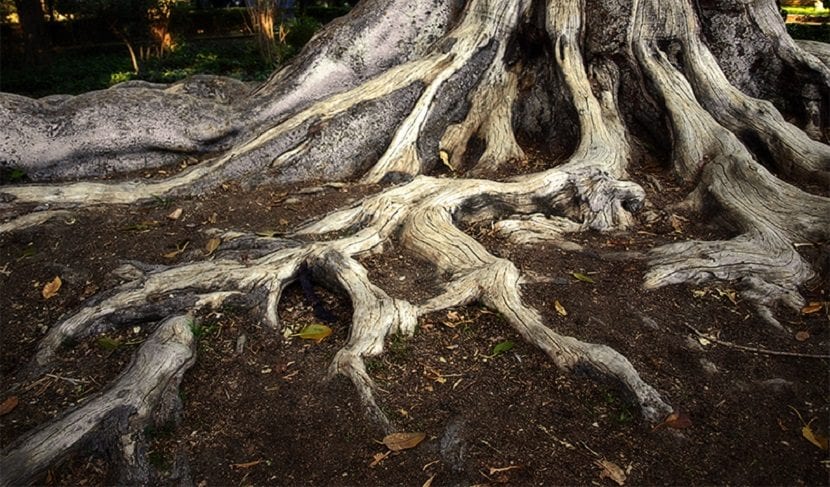
The roots fix the plants to the ground, but, in reality, they have other functions besides this one. In the earth there are various nutrients and minerals that, when it rains, are dissolved. The roots they absorb them through the absorbent hairs so that the aerial part, that is, the stem and the leaves, can stay healthy and grow.
Several parts are distinguished:
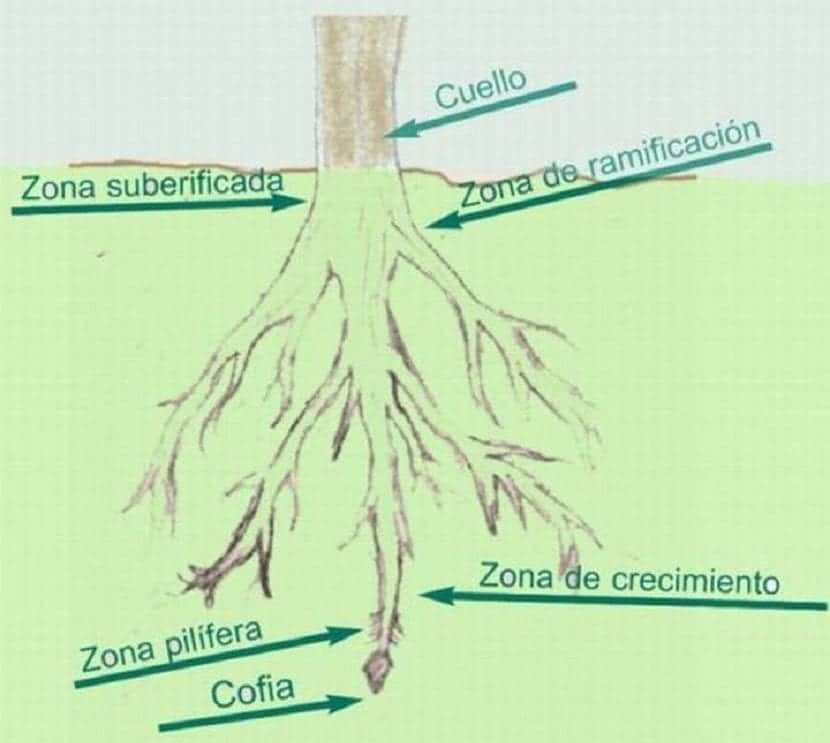
- Neck: is the part that joins the stem with the root.
- Suberified or branching zone: is the area between the neck and the piliferous area. This is where the secondary roots come from.
- Hairy area or absorbent hairs: is the area between the suberified area and the growth area. It is covered with hairs that absorb water and the minerals dissolved in it.
- Zone of growth or cell division: it is the area between the piliferous area and the cap. This is where root growth comes from.
- Coping: it is a cap that protects the tip of the root when it is introduced into the soil.
Stem
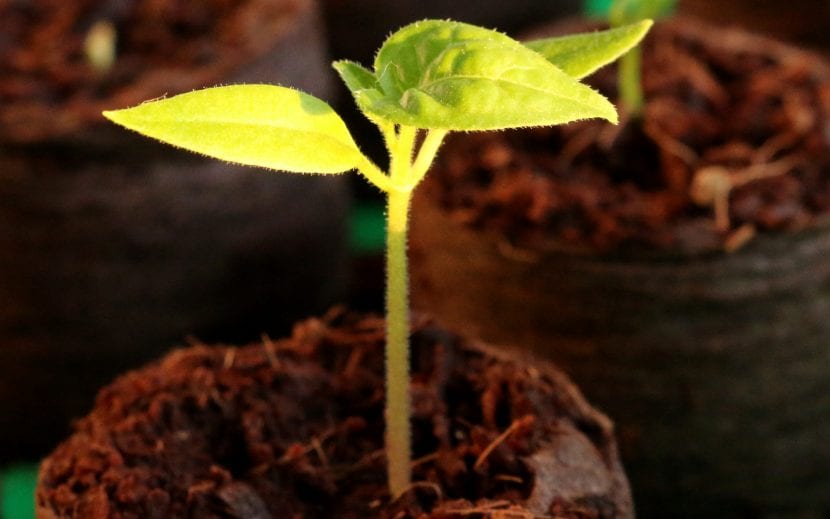
The stem is a very important part for plants. Its interior is full of life. The water with its minerals, known as raw sap, travels from the roots to the leaves through really fine tubes called woody vessels. When it reaches the leaves, mixes with the carbon dioxide that the leaves have taken from the air and turns into processed sap, which is the food of the plant.
The elaborated sap travels from the leaves to the roots, thus ensuring that all parts can feed.
Three main parts are distinguished:
- Neck: is the union of the root with the stem.
- Naked: from them arise the leaves and branches.
- yolks: give rise to the branches.
Leaves
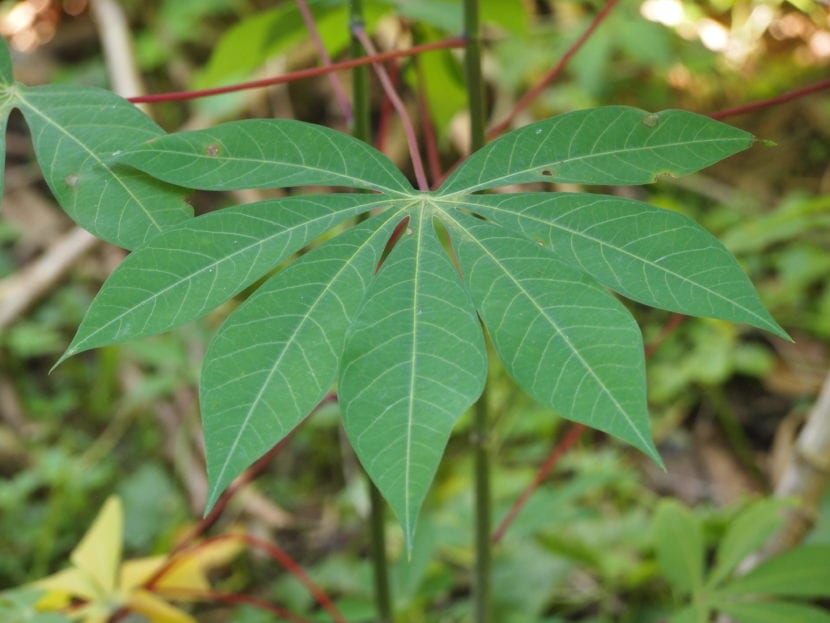
The leaves are the plant food factory. Thanks to them, they can breathe, absorbing oxygen and expelling carbon dioxide; perform the photosynthesis that we have already commented, and they can also perspire, which consists of expelling excess water through the stomata.
They come in many shapes and sizes, they can even change color throughout the year. At the same time, they can be perennial, that is, they fall as new ones emerge every few months or every X years, or expire, which are those that fall in a certain season of the year (summer or winter).
Several parts are distinguished:
- Limbo: is the more or less flat part. It has two faces: the top is the upper side and the reverse side is the underside.
- Petiole: is the filament that joins the leaf to the stem or branch.
- Sheath: is the widening of the petiole or blade that surrounds the stem.
Flower
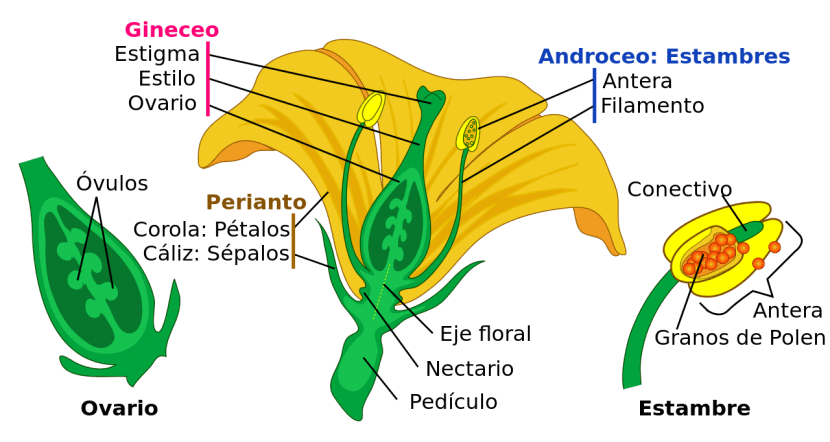
Flowers are incredible structures. Thanks to them, the plants can multiply year after year, thus managing to perpetuate the species. They are made up of different parts:
- Flower stalk: unites the flower with the stem.
- Floral wrap: it is a set of leaves that protect the reproductive organs. It is made up:
- Calyx: it is made up of little green daughters called sepals that are on the outside of the flower.
- Corolla: it is the flower itself. It is made up of leaves that can be of different colors that have the function of attracting pollinators.
- Reproductive organs:
- Stamens: they are rods that are in the center of the flower and that store pollen. It is the male organ of the flower.
- Filament: it is a very thin stem that supports the anther, which is a kind of sachet where the pollen is found.
- Pistils: they are formed by the ovary, which is where the ovules are found; the style which is a kind of small tube that joins the ovary with the stigma, and the stigma. It is the female organ of the flower.
Fruit
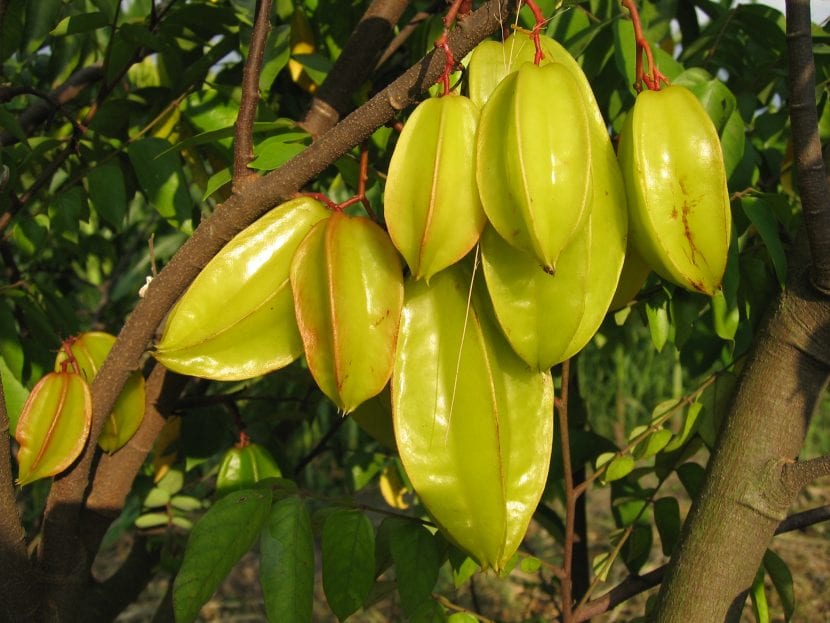
The fruit is the fertilized ovary. Inside it is one or more seeds. It can finish its development in a few weeks or sometimes in two years, as the Pine trees. It can be meaty or dry.
Seed

The seed is essential for plants since with them they can perpetuate their genes. There are many types: winged, smaller than the head of a pin, the size of a tennis ball ... In order to germinate, it is important that the conditions are suitable for each species. Thus, if for example it comes from a habitat where winter is very cold, in order for them to sprout it will be necessary that the temperatures are low.
Did you know the parts of plants and their function?
I really like your blog, I am passionate about nature and mainly botany. Greetings
We're glad you like it, Jonathan. 🙂
I liked it a lot but I wanted more information about the parts, I needed it for an exhibition.
We are glad that you found it interesting, Bethania. All the best.
this page is very good for a plant investigation
Hello Andre.
Thank you, we are glad that you like the blog.
Greetings.